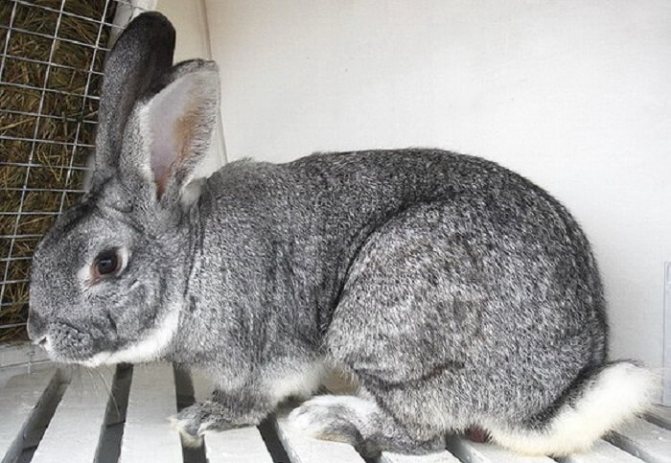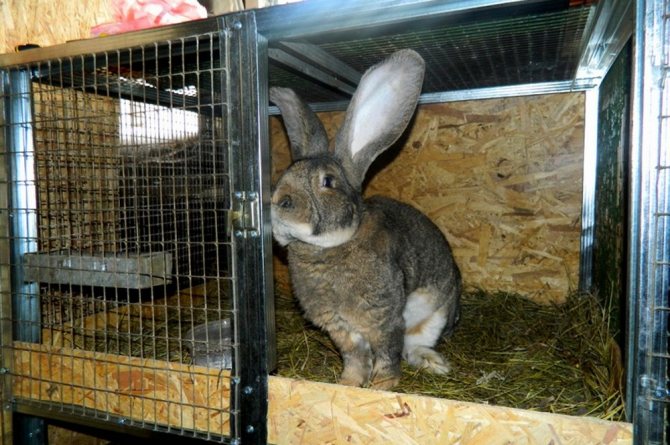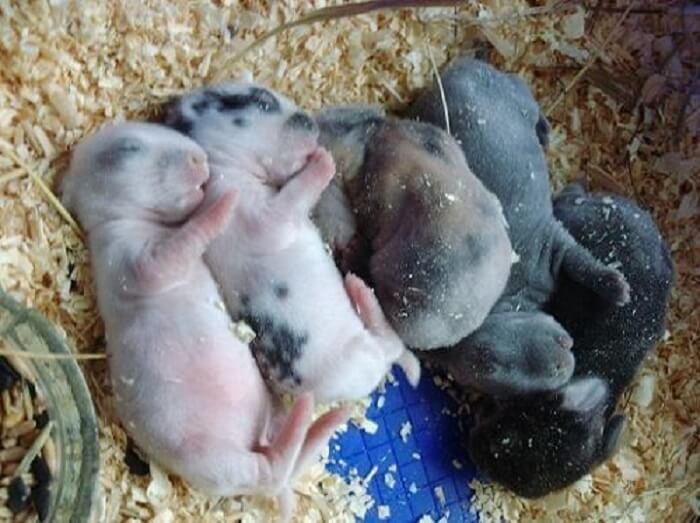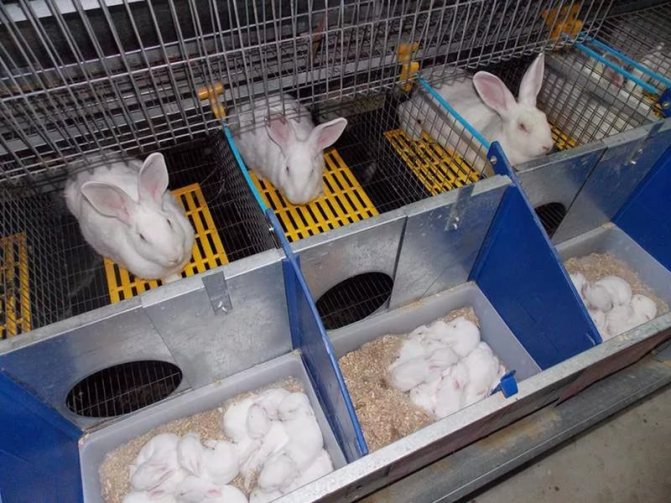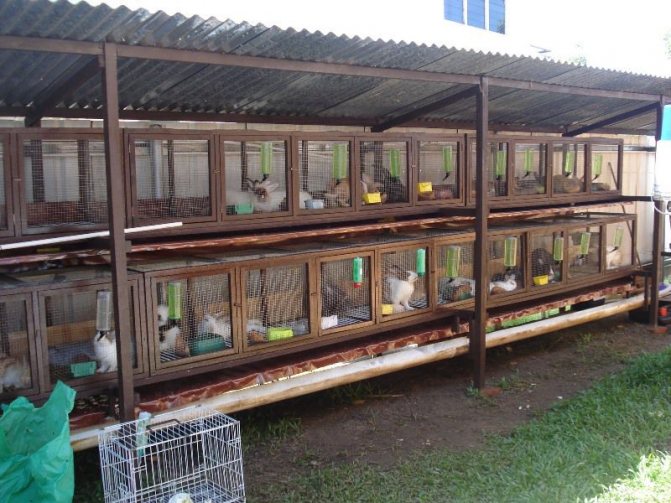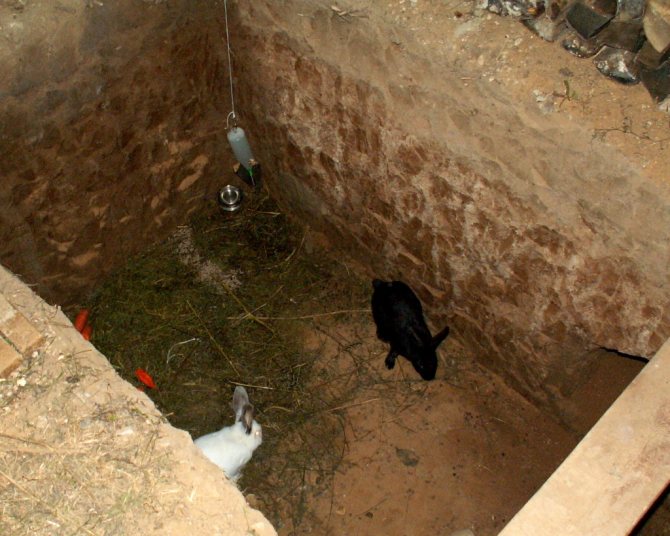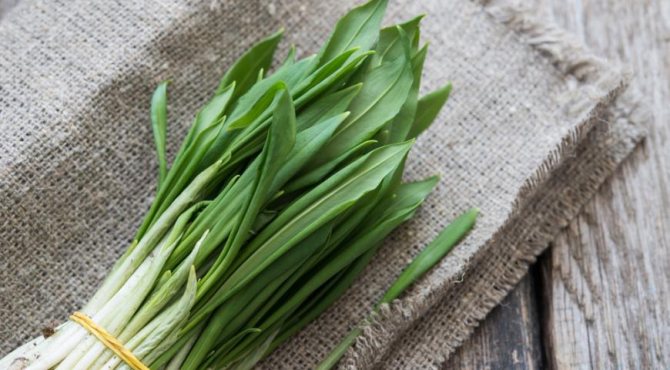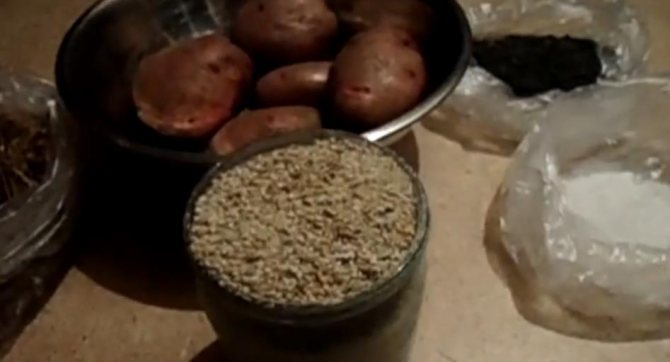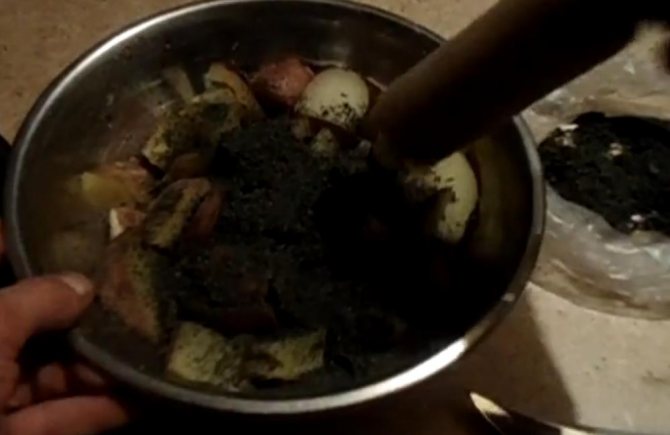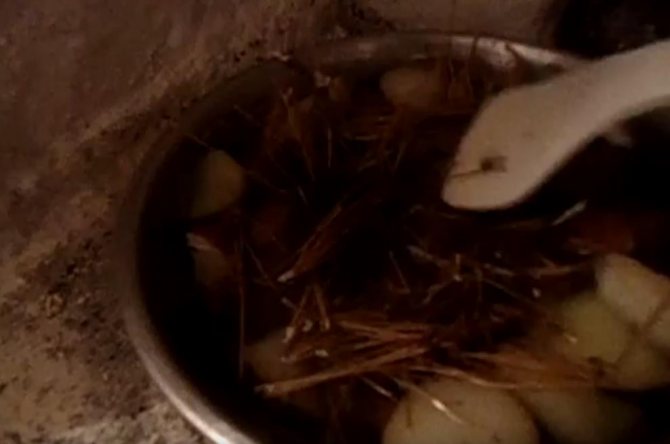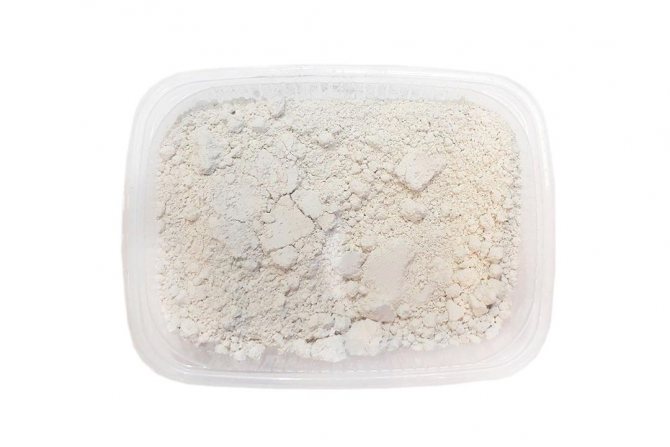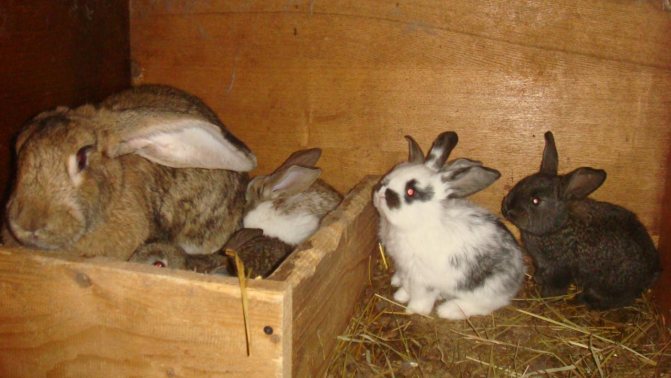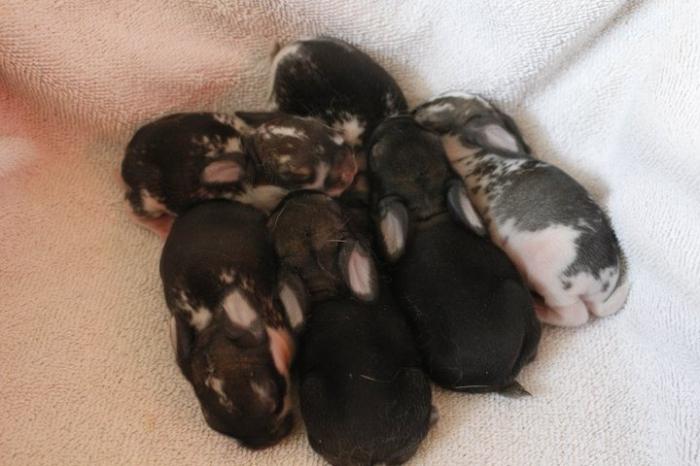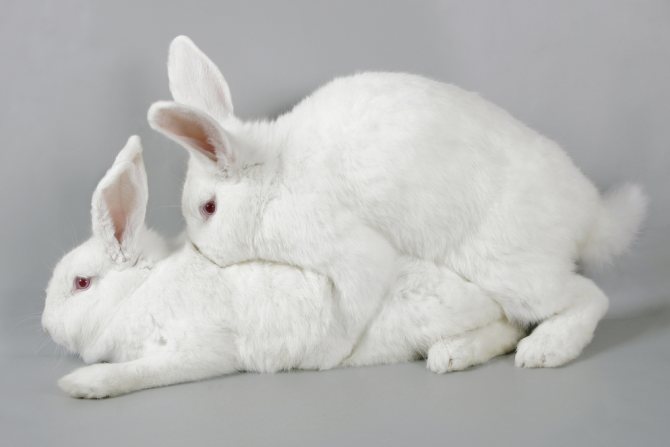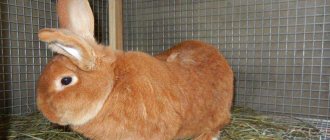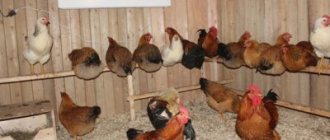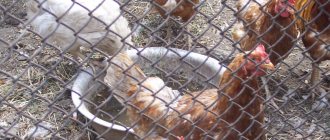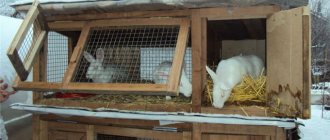- Pairing
Rabbit breeding is considered one of the most profitable livestock areas in the household. The high growth rates of these animals, their early maturity and fertility make it possible to justify the investment in a short time and make a profit from the sale of dietary meat and fairly valuable skins.
To achieve success in rabbit breeding, it is necessary to create optimal conditions for animals and provide them with adequate care.
In this article, we will talk about how to properly breed rabbits at home, what a novice farmer should pay attention to first of all, and how to minimize mistakes and risks.
How to choose a place to keep rabbits
Starting a new business is not easy. There are many factors that need to be examined to avoid mistakes. For example, before you start buying rabbits, you should take care of where they will live in advance. It is worth saying that this is not only the aesthetic part of the issue, but also a factor that will further contribute to the fact that the rabbits reproduce faster, hurt less, etc.
First of all, you need to have a certain territory. A summer cottage or a private house is considered an ideal place. Those who do not own such wealth will have to rent a place. As for the requirements for the area, it should not be too windy and humid there, as this will negatively affect the health of rabbits and rabbits.
Rabbit keeping options
After the terrain has been determined, you need to choose the most suitable rabbit breeding technology. Cages and aviaries are considered ideal conditions, although there are some narrow divisions as to how pets can be kept. These technologies will be discussed further. Let's start with those that are used on home farms and have up to a hundred heads.
The pit method of breeding rabbits
The first method, which will be discussed, is growing in pits. Experienced breeders do not recommend using it, despite the fact that it is the most financially beneficial for running a business. What is this placement? These are the most common dug holes in which rodents are placed, after which they are covered with iron nets to prevent escape. Further, after some time, rabbits will breed and break holes to accommodate their offspring.
The disadvantages of the pit method are that you will have to constantly depend on the weather, and the animals will be kept in mud, since the pit does not imply any flooring. For the same reason, skin breeds and those that are grown because of the fluff are not bred using the pit method, because the quality of the fur in this situation will be much worse than if the pet was kept, for example, in cages. For this reason, for a successful business, it is better to prefer other options and say no to pit content.
Among other things, the rabbits living in the pit will get sick more often, because the ground is damp, and this also causes a lot of trouble for the owner of the rabbit base and slows down the development of business.
Keeping rabbits in cages
This is the most common rabbit breeding method used by almost all rodent owners. Of course, you still have to spend money on the cage itself, and you can buy it ready-made in the store or make it yourself with your own hands. In order to make a cage yourself, you will need the simplest materials, a little ingenuity and hard work.
Currently, the most popular are Zolotukhin's drawings. They are used not only in Russia and other CIS countries, but also abroad, for example, in China and America. The fact is that the design proposed by Zolotukhin is as simple and understandable as possible, even a person who is far from designing can reproduce it.
Other methods are used subject to industrial content. Let's see where the eared ones live on large-scale rabbit farms with their detailed description.
Shedovy way of keeping rodents
This method of rabbit breeding is very popular among owners of large rabbit breeding farms. The fact is that with the help of the shed method it is possible to save space, thus it can be safely called the most compact of all available. The cages are arranged in several tiers, most often in 2. You have probably seen such farms in the photo or video.
Thanks to the use of the shed method, it is possible for 12 sq. m to arrange about 45 cells.
Speaking of the shed method, one cannot but mention the main drawback: it is too high a cost, which frightens off many livestock breeders, especially those who deal with rabbits for the first time. For this reason, you should not try your hand at animal husbandry, starting with the sheds, it is better to switch to them in the process of increasing the number of rabbits, if things go well.
Mikhailov's method
Only Mikhailov's system can be compared with the cost of shed placement: this method is the most expensive of all the existing ones. However, the high price is justified, since the method allows you to breed any kind of breed, is the most practical and fastest, which is also important in raising rabbits and building an effective business.
Mikhailov's system involves the arrangement of so-called minifarms, which are automatic or semi-automatic. The fact is that such mini-farms are designed so that human intervention is minimal. In the shortest possible time, it will be possible to grow an adult rabbit from a small rabbit, since all the conditions have been created for this. This is due to the fact that here Mikhailov applied the technology of growing rabbits with accelerators (acceleration growing), which will maximize the speed of the mass gain process. On average, the time is reduced by 1-3 months, which plays into the hands when calculating the business plan and increases the profitability of the project with a further perspective.
Breed selection
Having made the decision to start breeding rabbits, you need to decide on the purpose of your activity. Some grow eared pets for the purpose of selling rabbits, in which case it is worth stopping at decorative breeds. Now they are very popular, such pets are purchased as pets. Other breeds of rabbits:
Meat... These rabbits are raised for meat. They quickly gain weight, after 6-7 months from each individual it is possible to get at least 4 kg of dietary rabbit meat. Purely meat breeds do not have high quality skins. These include the California and New Zealand white rabbit.
Downy... Such animals are raised solely for the sake of their skin. Downy rabbit meat can also be eaten, but it is not highly prized in the market. Having decided to breed rabbits for the sake of selling high-quality fur, you should pay attention to the white downy or angora rabbit breeds.
Meat-skinned... This direction is universal. Raising Soviet chinchilla rabbits, black-brown or silver, you can get a double benefit - good quality meat and skins.
General recommendations for arranging a rabbitry
Regardless of which method the farmer prefers, you need to follow these recommendations for keeping rabbits:
- It is advisable to place rabbits at a certain distance from other pets and birds as well.
- If you choose to breed rabbits outdoors, you need to make sure that the area with rodents is surrounded by trees. Of course, this recommendation is no longer applicable to small household farms, but to industrial farms. The most suitable tree is birch. If the territory and budget allows, then trees should be planted on the territory of the farm itself. All this is needed in order to create the necessary climate for animals. The crown of trees will serve as protection from the scorching sun in summer, as well as protect from the cold in winter.
Cell classification
Rabbit cages are classified according to the conditions of detention, according to the characteristics of the inhabitants, according to materials and type of construction.
Depending on the conditions in which the rabbitry is located, outdoor stationary and mobile premises, stationary structures for premises, as well as cages with walking enclosures are distinguished. Cages can be designed for single keeping of males, for young animals (placed in groups of 5-15 pieces), as well as for keeping a rabbit with newborn offspring.
The materials from which the cells are made:
- metal, metal mesh;
- wood;
- plywood;
- plastic (usually used for pallets).
What inventory is required
Now that the place for breeding rabbits has been selected and the breeding method has been determined, you need to start manufacturing and purchasing the necessary equipment and implements that will be required to care for the rodents. This includes:
- Drinking bowls and feeders. They must be purchased at the rate of 1 pc. for 3 individuals.
- Plastic buckets. They are used as temporary containers for food and water.
- Carts, wheelbarrows or baskets on wheels. They greatly simplify the transportation of forage, in particular greens and hay. In addition, do not forget that it will be important to regularly clean the cells, and then dispose of the manure.
- A broom for cleaning the territory occupied by the farm.
- The rules on which the rabbit skin is pulled. They are needed by those who plan to deal with the processing of skins.
- Tools needed to drive livestock. Moreover, it is necessary to equip a special room in which the slaughter of animals will take place, it is called a butcher shop.
- Logs for keeping records of animals (they record the number of feedings, data on vaccinations, norms for the development of young animals, and so on).
It is worth saying that as the number of rabbits grows and the farm develops, assistants will be needed, since it will no longer be possible to cope alone. Many cope with the participation of the whole family, that is, rabbit breeding at home becomes a family business. However, it is better if those people who are experts in this matter are involved in the process of breeding rabbits. They will be able to share their experience in rodent care, feeding, reproduction and treatment.
If you cannot find such people as assistants, then you can turn to amateur videos and photo lessons that rabbit-breeders post on the Internet for help.
The main mistakes when breeding and tips for breeders
Frequent mistakes that arise when breeding rabbits: - a rare change of drinking water; - insufficient harvesting of cells; - neglect of vaccination and veterinarian services, self-medication of animals; - mishandling of pets; - poor quality food; - placement of animals in a draft or sun.
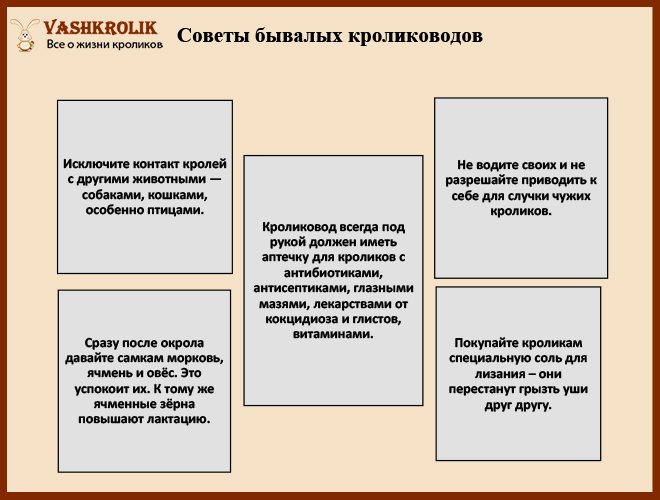
Recently, rabbit breeding in Russia has begun to gain more and more popularity among novice farmers. And this is not surprising. After all, breeding rabbits is easy and simple. In addition, this is a great opportunity to provide families with excellent quality meat delicacies and improve their financial well-being by selling rabbit meat products and skins.
Feeding rabbits
The issue of feeding is also important. It is important to understand which food is suitable for rodents. Despite the fact that rabbits are miniature animals, everyone can envy their appetite. They need a huge amount of food, and you need to take into account the fact that it should be varied:
- The composition of feed for rabbits should include compound feed. This item accounts for more than half of the animal's diet.
- Hay. This component of the menu improves the process of digestion of food in the digestive tract of rabbits.
- Branches of fruit trees, as well as oak and birch. In this case, the needles are strictly prohibited for introduction into the diet. Why should rabbits have branches in their diet? This is necessary for the eared ears to grind their teeth, and the animals themselves chew wood with pleasure.
- Vegetables. Rabbits love vegetables, and they also contain a lot of vitamins. The exceptions are potatoes, cabbage and beetroot. All of these components can lead to serious gastrointestinal problems.
- Rodents need greenery and are good for the health of rabbits as well. There are also herbs that need to be discarded: euphorbia, buttercup and lilies of the valley.
Daylight hours and sanitary and hygienic standards
Rabbits love grooming! This is worth remembering, both for beginners and experienced rabbit breeders. For the normal life of pets, the necessary microclimate is created:
- temperature;
- humidity;
- direction, speed of movement, air composition;
- the length of daylight hours;
- room illumination.


Rabbit breeders should control the length of daylight hours (especially in winter or when placing rabbits indoors).
Illumination affects: - sexual activity; - the volume of erythrocytes in the blood of animals.
The daylight hours of the rabbit should be at least 16-18 hours.
Illumination should be different: Male-producers require more light - 100-125 Lux, rabbit with rabbits should also be light - 40-70 Lux, and young animals need 20 Lux.
In summer, animals need sunlight (saturation with vitamin D), but when placed outdoors, it is recommended to limit cells from direct contact, to control so that the eared ones do not overheat. When kept closed, the windows are installed so that sunlight from the street gets through them.
Window area in the rabbit room = 10% of the floor area of that room.


For the winter, it is recommended to equip rabbitries with artificial lamps.
Breeding features of rabbits
If you are planning to breed rabbits, then you must be aware of the breeding habits of these animals. Despite their fertility, in order for the livestock to increase, it is necessary to create certain conditions for mating, as well as to balance the percentage of the ratio of males and females.
In order to create the most acceptable conditions, there should be about 5 rabbits per 1 crawl. If there are more males, then there is a high probability that there will be quarrels and fights between males. The easiest way is to settle the rabbits into groups, in one such group there will be about 5 females. Then you need to periodically plant an inseminating rabbit in the female company. It is important not to settle them together on an ongoing basis: adults can trample young animals.
Optimal cell sizes
The sizes of the structures differ depending on the age and size of the animals. General recommendations here are as follows:
- to accommodate a rabbit with a brood, you will need a space 170-180 cm long, 1 m wide and up to 70 cm high;
- in a group cage for young animals, the area is calculated based on the ratio per 1 individual - 0.2 sq.m. premises;
- single cages for growing young animals have an area of about 0.5 sq. m. with a wall height of at least 35 cm;
- Large adult rabbits require a space of at least 60 cm wide, 120 cm long and 50 cm high.
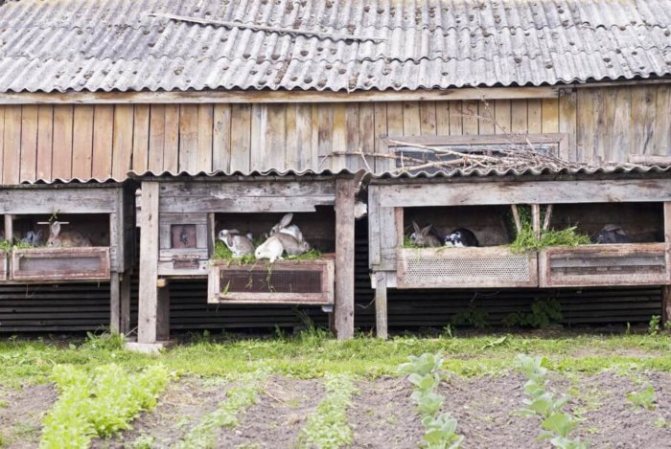

Rabbitry
How does mating happen
Only healthy individuals are allowed to mate or mate. In rabbits, inbreeding is allowed, that is, the mating of closely related individuals. To select such, you need to carefully examine them for external signs of illness, as well as conduct a superficial analysis of behavior. If the rabbit is healthy, then its appearance will be well-fed, and its behavior will be cheerful. The approximate age that is optimal for the first mating is 4-5 months. The fertility period in females lasts about 4 years, although there are exceptions to the rule in some breeds.
It is correct to mate on the territory of the male: this way the rabbit will feel as confident as possible. Only females that are currently hunting should be selected. How to determine if a female is ready to mate? This will be indicated by the following signs:
- on palpation, the auricles become hot;
- there is a noticeable swelling of the genitals, transparent discharge from the genital fissure may appear;
- the female can make a semblance of a nest from her own fluff, which she plucked from herself.
As for the time, early morning or late evening is considered ideal; it is best to try the male 2 times at the previously indicated time intervals. To understand whether the mating was successful, you need to carefully observe how the male behaves immediately after mating. If he freezes and remains motionless for some time, then with a high degree of probability it can be argued that everything went well.
To understand at an early stage whether a female has become pregnant, you need to see how she reacts to a rabbit in the immediate vicinity. If she is trying in every possible way to get away from him, then most likely she is pregnant, and after 30-40 days you can wait for the appearance of little rabbits.
Determination of pregnancy in rabbits
Pregnant rabbit
Experienced breeders carry out control mating 5-6 days after the first coating. Most often, an already pregnant female is not given to the male for re-mating.
After 2 weeks, you can try to feel the belly of the covered female. The animal is taken out of the cage, turned towards itself, holding the female by the skin in the region of the sacrum with one hand. At this time, the other is probed the belly; in a pregnant rabbit in the back half, you can feel the embryos as one or two chains parallel to each other. The size of the embryo at this time is 2-3 cm. The probing is done very carefully so as not to harm the babies and not cause an artificial birth.
When 5-7 days remain before delivery, the female begins to prepare the nest and bedding for the cubs. For this she uses straw and grass from the nursery. A day before the okrol, the rabbit pluck out her own fluff and lined the nest with it.
What should be the care of newborn rabbits
After birth, about 7 new little rabbits are born. They look very tiny, as evidenced by their weight: about 60 g. It can also be said that at first newborn babies are completely defenseless, since they are born completely blind and without fur. In order for the rabbit to have enough milk, it is necessary to provide her with constant access to water. If this is not done, there is a high probability that the young will be eaten by their own mother.
During breastfeeding, it is necessary to intervene minimally in the natural process, because a rabbit, on which the smell of a person remains, with a high degree of probability can be rejected by the rabbit, after which imminent death awaits him. After the rabbits reach the age of 1 month, they need to be removed from the mother and settled in separate cages. At this age, the stocking density can be about 12-18 heads per cage.
Skinning the carcass
Cutting is carried out by hanging the rabbit on some branch or pole. Tie the carcass with twine by the hind legs. For better drainage of blood immediately after killing, you need to cut the bridge of the nose. The skin is removed like a stocking by cutting it around the hind legs and cutting along their inner side.
All organs are removed from the carcass, except for the liver, from which the bile is carefully cut off. Before cooking, it is advisable to keep the carcass in the refrigerator for at least 24 hours. During this time, a partial breakdown of the protein will occur, and the meat will become tastier.
As you can see, keeping rabbits in cages is quite troublesome. However, if you follow the rules of feeding, the most important thing is cleanliness in the cages, and the success of this enterprise is guaranteed.


